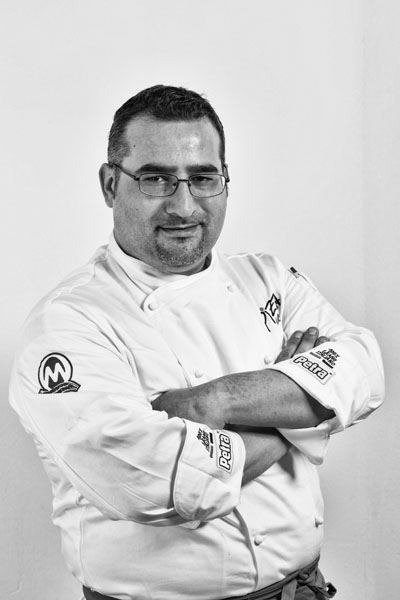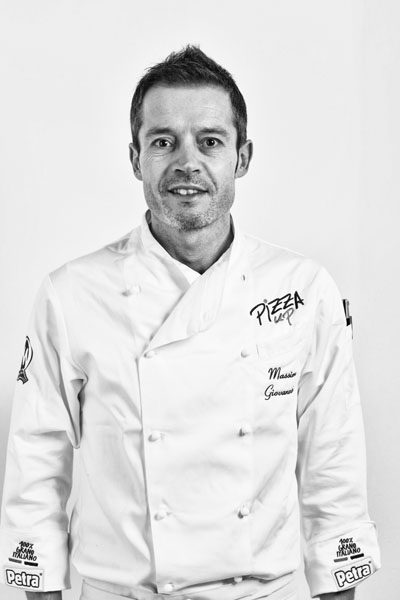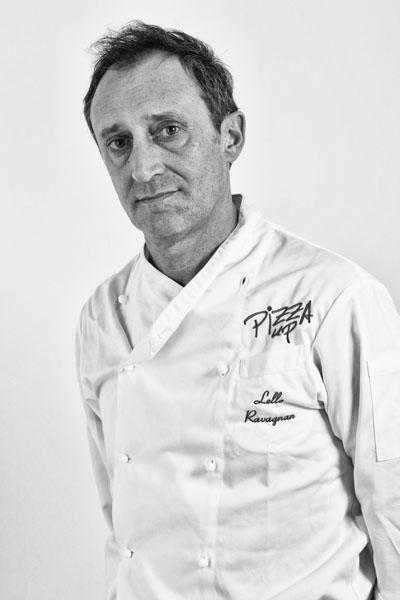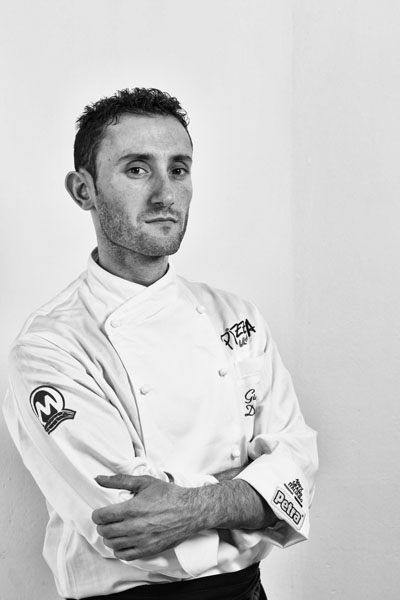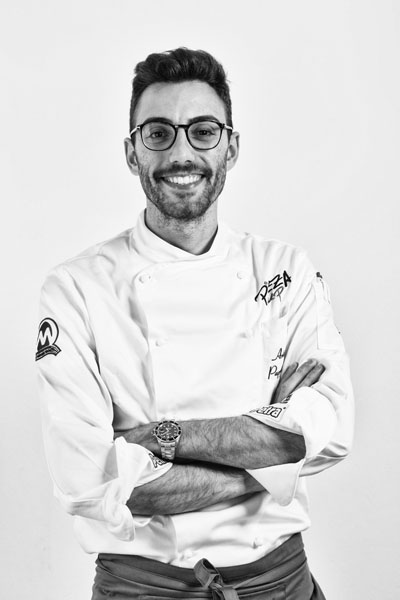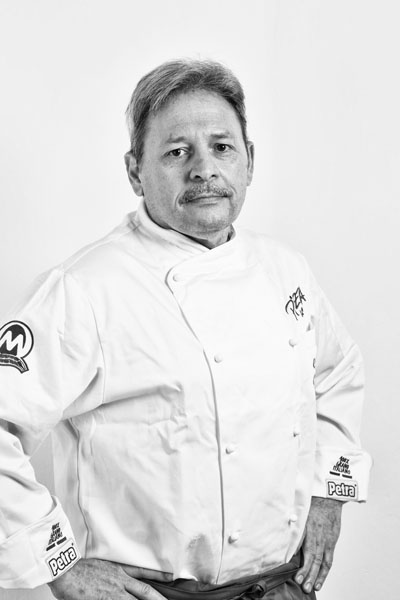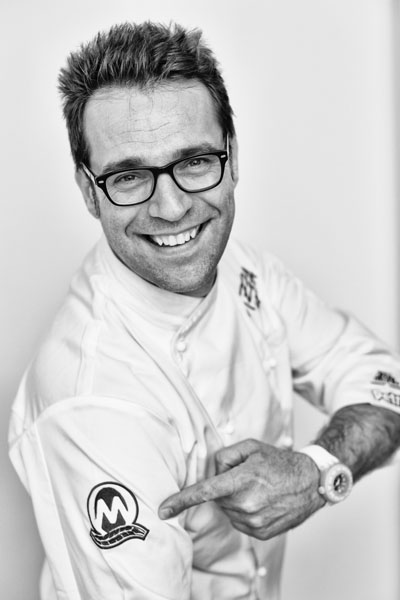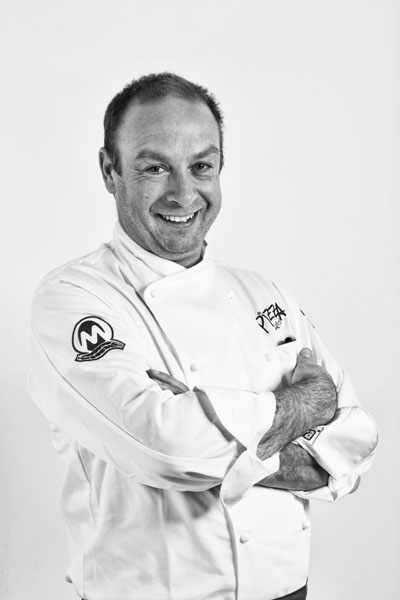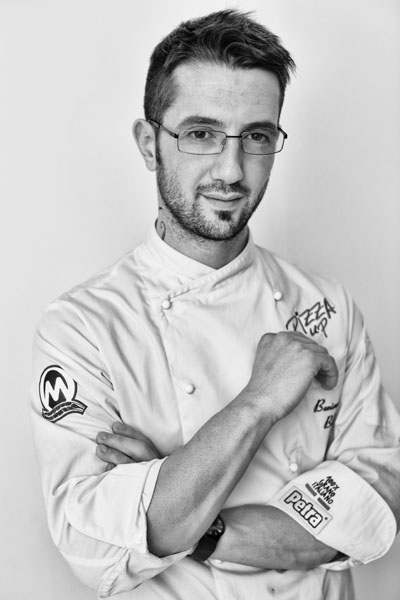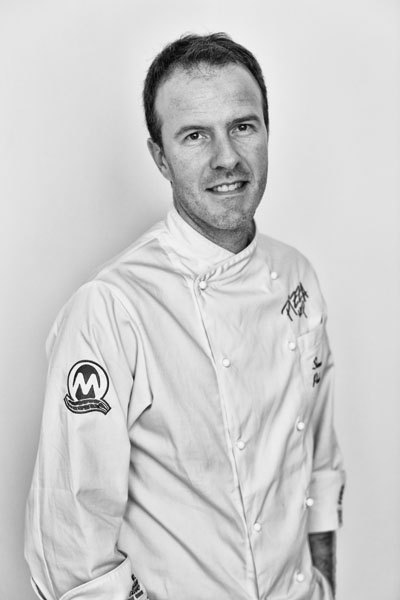
Pizza must also be an expression of pizza makers creativity, so that their degree of culture and knowledge of the past become seeds of non-stop innovation.
#2 Manifesto della Pizza Italiana Contemporanea, 2012
by
Eleonora COZZELLA
journalist
BACK TO MANIFESTO >
Open your heart to this profession and believe that it can be changed.
This is the advice that Simone Padoan, born in 1971, a pizza maker recognised as the creator of that haute cuisine pizza that intrigues so much, addresses to younger people and to those who want to get back into the game and start again. He did this about ten years ago, discovering that even in the pizzeria sector there is room for something different. And he was right. 'People are used to eating what you offer them, but they can learn to eat something else, it's up to you,' he explains.
His story starts way back: the youngest of nine siblings all with pizza-making backgrounds, he was 'immersed' in the world of pizzerias from the age of six. Between 1988 and 1994 he worked closely with one of his brothers and learned the secrets of one of the most popular trades in Italy in the field. In 1994, he opened his own pizzeria: a classic pizzeria, very different from today's, with a reduced offer but a focus on seasonal products even then.
With the change of times and the birth of large mixed establishments capable of offering pizzas alongside a classic restaurant menu, Simone experienced a personal work crisis, thinking that the pizzeria world had no future. But he is wrong. And this moment of difficulty serves him as an opportunity for reflection, as a cue to change, to reset a situation and start again.
Thanks to the support of some friends, he learns more and more to believe in his ideas and his qualities: he begins to study the use of raw materials, fermentation techniques, the use of mother yeast.
This is the beginning of the turning point. Working and experimenting, the young pizza maker from San Bonifacio understands that the old pizza identity can be renewed: people are open to change, you just have to dare. 'When you discover a new world,' says Padoan, 'you experience it in a different way, you change perspective and see things from a different angle, you have enthusiasm for what you do'.
This is how the tasting pizza was born, with the intention of making people fully enjoy the product in its simplicity. 'I believed a lot in what I was doing,' continues Simone Padoan, 'but at the same time it scared me. So I started by organising themed evenings on the closing day of my restaurant, inviting the producers I used to use: it was a way to teach, to make my customers understand a path, and to get to know the raw materials, the products I used in my new pizzas. Then, little by little, I began to offer a few pizzas off the menu, even during normal working days, until 2005, a year that was strongly marked by the death of my father, when my consecration arrived thanks to a number of guides, such as Gambero Rosso and a report aired on Matrix.
Since then it has been an evolution, a crescendo, an affirmation of a real philosophy of work and life: 'Our intention,' Padoan explains, 'is to make high quality products in a transparent way. We have never hidden what we do, and if many people criticise me for this because we give the impression of being easily copied, I believe instead that the fact that someone follows what we are doing is a recognition for us, it means that we have left a mark in the world of pizzerias'.
And a mark Simone Padoan's pizzas also leave deep-rooted among customers for the emotion they convey, for the taste that distinguishes them, for the passion and creation that can be perceived as soon as the dish is served on the table. "This job is my life. Many people eat exclusively for sustenance and that is a very sad fact for me. Every dish is born from an emotion and this is what I try to convey,' Padoan comments.
Among the proposals at I Tigli, in addition to the innovative menu that changes constantly, there are must-haves such as the pizza with burrata and San Daniele prosciutto crudo 'riserva 18 mesi' or the one with buffalo buffalo from Campania and date tomatoes with basil. The latter is the one Simone is most attached to, the one he eats most often and which most reminds him of his family, his brothers, his childhood, his beginning.
And if among the Veronese pizza chef's future plans is the desire to realise a dream that he has long held in his heart and head, Simone has no doubts about the future: 'we must return more and more to valuing the human relationship in everything we do, even in our work,' and to those who want to approach the profession of pizza chef for the first time, Simone reminds us not only to believe in the change in a sector that has so much to develop, but above all not to copy and to trust our own ideas so that we never have to be second to anyone.
Original text published 7 November 2012
